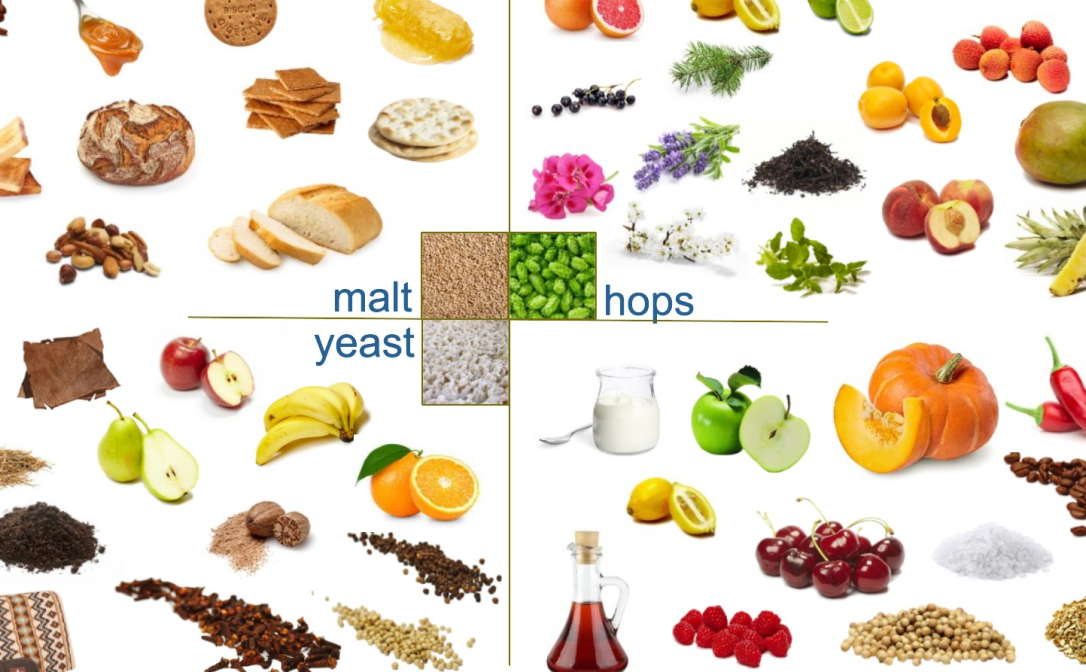For wine enthusiasts, the world of beer offers a rich and diverse landscape waiting to be explored. Just as wine has its own unique characteristics and complexities, so too does beer. Transitioning from wine tasting to beer tasting can be a seamless and rewarding experience, as both beverages share a foundation of fermentation and a wide range of flavours.
Looking to improve your beer tasting skills? The WSET Level 2 Award in Beer is an intermediate level qualification that will help you understand how key ingredients and production processes influence the flavour profile and quality of beer.
With the help of Mirella Amato, beer expert, Master Cicerone®, and WSET’s Senior Business Development Manager for Beer, this guide aims to help experienced wine tasters make a simple shift in gears from wine tasting to beer tasting by building on existing knowledge. We’ll equip you with the knowledge and tools to confidently transfer your tasting skills, highlighting both the similarities and differences between these two beverages.
Key sensory differences between wine and beer
While tasting beer and wine is a similar skillset, the sensory profile of beer is quite different:
- Ingredients: In addition to malted grains, hops, yeast, and water, brewers can be very flexible, allowing for a variety of additions. They can be very creative, including ingredients like chocolate, and sometimes as outlandish as smoked meat or even gummy bears.
- Carbonation: While carbonation is present in some wines, it is a defining characteristic of most beers.
- Alcohol Content (ABV): There are, of course, exceptions to the rule, with lower ABV wines on the market and some beer styles with ABVs of up to 12%—or higher!
Beer ingredients and their aromas
- Grains (malted grains): These provide the sugar needed for fermentation. Aromas can range from bread and honey to chocolate and coffee.
- Hops: This contributes bitterness and a variety of aromas, including floral, fruity, herbal, and pine.
- Yeast: Different yeast strains can produce fruity esters or spicy phenols, adding complexity to the beer.
To learn more about beer aromas, take a look at the WSET Beer Level 2 Systematic Approach to Tasting® (SAT).

Beer aromas contributed by the key ingredients, as well as from other additions.
Similarities in beer and wine aromas
Beer and wine share several aromas due to various compounds derived from their raw materials, fermentation, and aging processes. Here are some common aromatic profiles they can share:
- Floral aromas like elderflower, jasmine, and rose are found in traditional European styles and saisons, and aromatic white wines like Gewürztraminer or Muscat.
- Spicy aromas like clove, and nutmeg are produced by yeast strains in Belgian ales and wheat beers, and are also found in oak-aged wines or certain reds like Syrah.
- Forest floor aromas are found in certain English style ales and some aged red wines, for example Pinot Noir.
- Caramel, toffee, and honey aromas are present in malt-forward beers like bocks and dessert wines like Sauternes.
- Fermented aromas like barnyard, leather, and Brettanomyces are found in some spontaneously fermented beers and natural wines.
These shared aromatic profiles highlight the sensory parallels between beer and wine, making them fascinating to compare and pair with food.
For more on this topic, watch the Shifting Gears webinar, and let Mirella Amato talk you through a beer tasting, from a wine perspective.
Keep an eye out for part two of the Shifting Gears series, where we will dive into the SAT for both wine and beer, and share more practical tasting tips.


